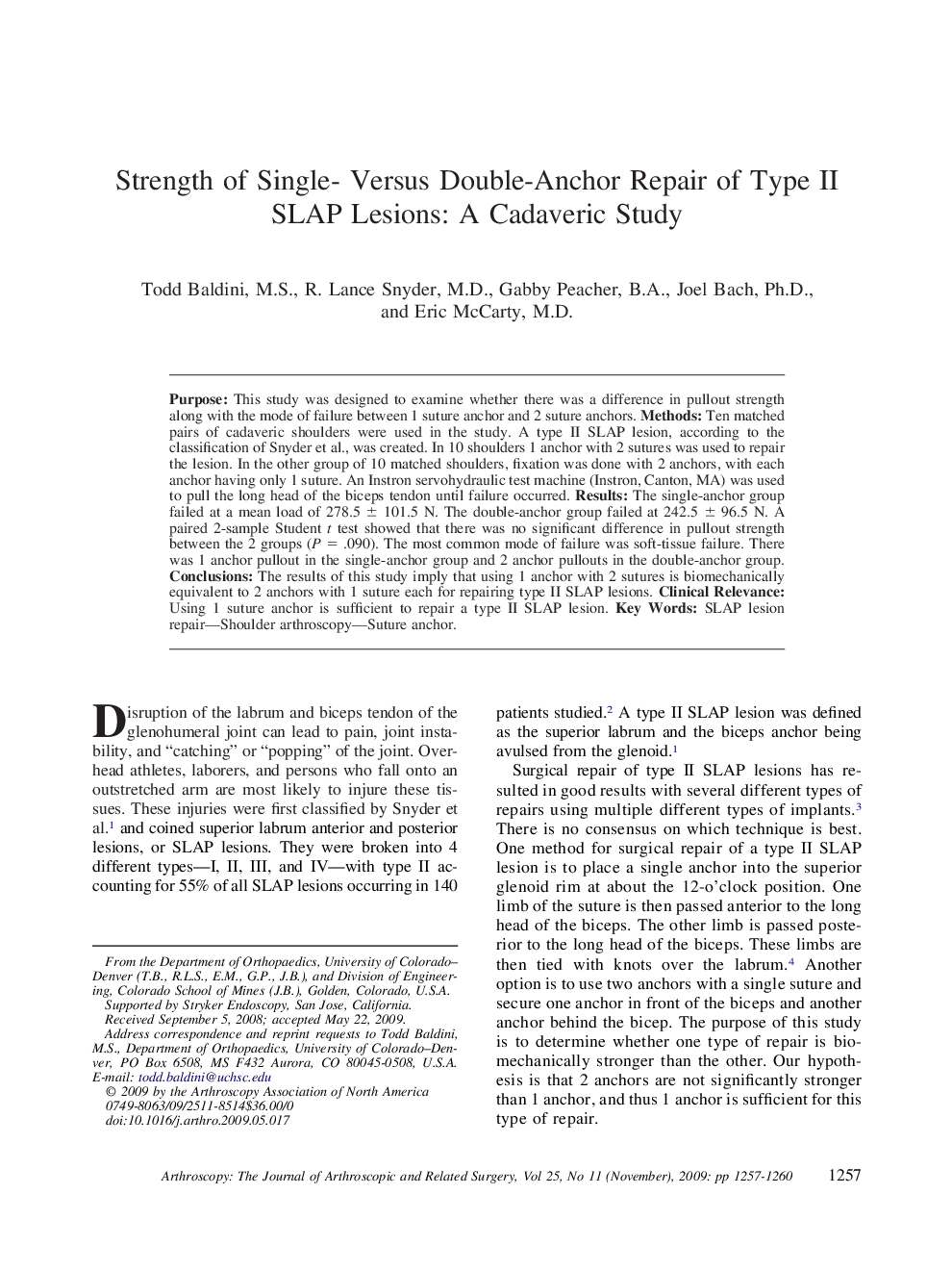| کد مقاله | کد نشریه | سال انتشار | مقاله انگلیسی | نسخه تمام متن |
|---|---|---|---|---|
| 4046582 | 1603565 | 2009 | 4 صفحه PDF | دانلود رایگان |

PurposeThis study was designed to examine whether there was a difference in pullout strength along with the mode of failure between 1 suture anchor and 2 suture anchors.MethodsTen matched pairs of cadaveric shoulders were used in the study. A type II SLAP lesion, according to the classification of Snyder et al., was created. In 10 shoulders 1 anchor with 2 sutures was used to repair the lesion. In the other group of 10 matched shoulders, fixation was done with 2 anchors, with each anchor having only 1 suture. An Instron servohydraulic test machine (Instron, Canton, MA) was used to pull the long head of the biceps tendon until failure occurred.ResultsThe single-anchor group failed at a mean load of 278.5 ± 101.5 N. The double-anchor group failed at 242.5 ± 96.5 N. A paired 2-sample Student t test showed that there was no significant difference in pullout strength between the 2 groups (P = .090). The most common mode of failure was soft-tissue failure. There was 1 anchor pullout in the single-anchor group and 2 anchor pullouts in the double-anchor group.ConclusionsThe results of this study imply that using 1 anchor with 2 sutures is biomechanically equivalent to 2 anchors with 1 suture each for repairing type II SLAP lesions.Clinical RelevanceUsing 1 suture anchor is sufficient to repair a type II SLAP lesion.
Journal: Arthroscopy: The Journal of Arthroscopic & Related Surgery - Volume 25, Issue 11, November 2009, Pages 1257–1260